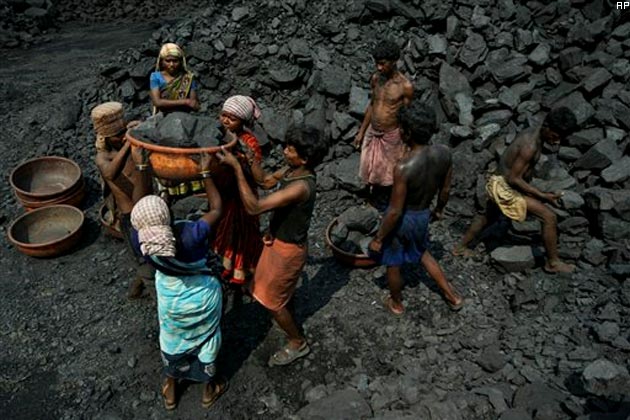
 State-owned Coal India Limited (CIL) is the world’s largest producer (465 million tonnes/year), but underperformance has the country moving toward imports and privatization, according to a report appearing in the online edition of Forbes magazine on Nov 9, 2014.
State-owned Coal India Limited (CIL) is the world’s largest producer (465 million tonnes/year), but underperformance has the country moving toward imports and privatization, according to a report appearing in the online edition of Forbes magazine on Nov 9, 2014.
CIL’s output/employee/year has been around 1,200 tonnes, compared to over 10,000 tonnes in Australia. Capital expenditures for domestic assets this year were less than $800 million, in contrast to China’s Shenua Group, which spends a few billion dollars a year increasing coal production.
It’s no wonder that India’s coal supplies and transportation systems are struggling to keep pace with surging demand, and more foreign coal are needed to fill the gap. Prime Minister Modi’s “Make in India” campaign will bring in foreign firms to build factories, expand economic growth, and elevate India’s living standards, still among the lowest of the emerging markets. India’s real GDP/capita is just $1,700, versus $4,560 for the rest of the developing world.
Need for Coal-Based Electricity
India is easily the most energy-deprived nation on Earth, with 1) 700 million lacking modernenergy services, 2) 310 million lacking electricity, and 3) just a 700 kWh/capita/year electricity use rate (80% below the global average). India’s long-term demand for thermal coal stems from a massive coal-fired build out (Ultra Mega Power Plants, UMPP) that will deploy larger (capacities > 4,000 MW) and much more efficient (> 43% vs. 29% for subcritical) super/ultra-supercritical plants to reduce feed and emissions. Well more than half of new coal- based capacity for the 12th Five Year Plan (2012-2017) will deploy these advanced coal technologies. Cheaper, more reliable baseload coal power will help alleviate widespread electricity shortages that have been eroding the Indian economy by some $65 billion a year!
Power Minister Piyush Goyal has coal playing an “essential role” in his $250 billion plan to provide “Power for All” by 2019. Per the International Energy Agency (IEA), coal is expected to rise from 43% of total energy supply today to 46% in 2020 and 51% in 2035, while maintaining its ~68% hold on electricity.
Importantly, India has watched neighbor China leverage coal power to lift 650 million people out of poverty since 1990, and sail past the global average for Human Development Index. Over that time, China’s per capita coal electricity use rate increased to 3,200 kWh, up from just 420 kWh in 1990. Wanting the same, India’s coal demand structure has evolved from 54% power generation in 1990 to 68% today, against 85% in the EU and 93% in the U.S.
Since 2000, India’s coal power has nearly doubled to 800 TWh, while real GDP/capita doubled and Health Adjusted Life Expectancy increased 5 years to 58. India’s new modern coal plants are reducing SO2, NOx, and particulates and slash CO2 emissions by nearly 40%. And despite staggering energy poverty, India has impressively lowered its carbon intensity (on a PPP level) by ~17% since 2006 (when UMPP started), on par with EU progress.
Indeed, environmental groups MUST realize that even under the IEA’s highly optimistic best- case policy projection for renewables (450 Scenario), wind and solar together will be just 8% of India’s electricity in 2020 and 17% in 2035. And even then, 20 years from now, Indians at most are expected to consume just 20% of what Americans today.





















